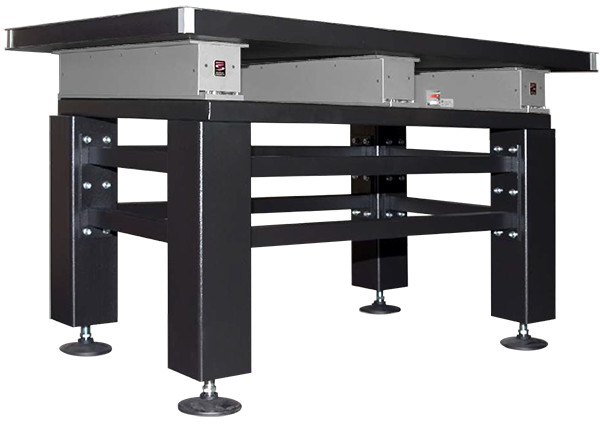Support Frames
To obtain the optimum performance from any active vibration isolation system it must be supported on a surface which is as rigid as possible. The best possible performance is obtained with the system sitting directly on the floor. However for most applications this will not be practical, and some support structure will be required to bring the system to a convenient operating height. Most simple table structures will be rigid enough vertically, but will leave much to be desired horizontally. The addition of diagonal struts between the table legs can improve the situation dramatically.
It is good to bear in mind that any support structure will follow the building vibrations exactly up to some certain cut off frequency at which point the structure goes into resonance and amplifies the vibration amplitudes. A typical structure may have its lowest horizontal resonance frequencies around 40-60 Hz. A good structure will have its lowest resonance frequency well above 100Hz.
Our support frames are very rigid and can be customized to any dimension
Typical support frame for a TS-series system

Typical support frame for a AVI-series system including a table top plate

Support frame schematic

Sample dimensions (in mm):
| a | b | d | a1 | b1 | h1 | h2 | H | Foot | Weight |
|---|---|---|---|---|---|---|---|---|---|
| 600 | 600 | 15 | 80 | 80 | 80 | 100 | 600-690 | 80 | 45 kg |
| 800 | 600 | 15 | 80 | 80 | 80 | 100 | 600-690 | 80 | 60 kg |
